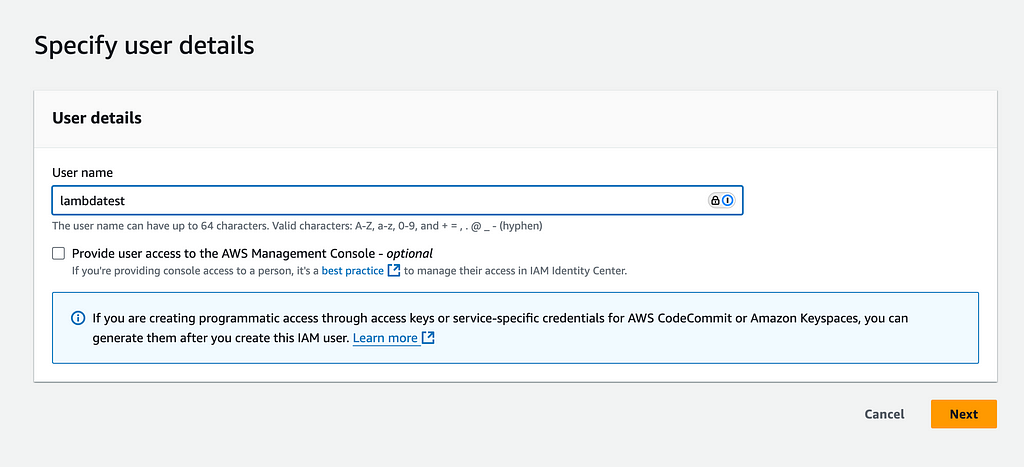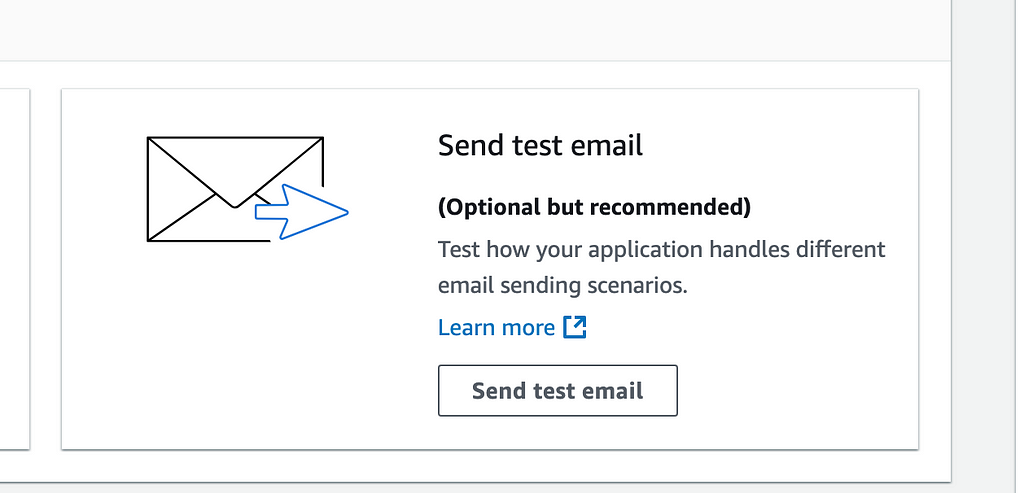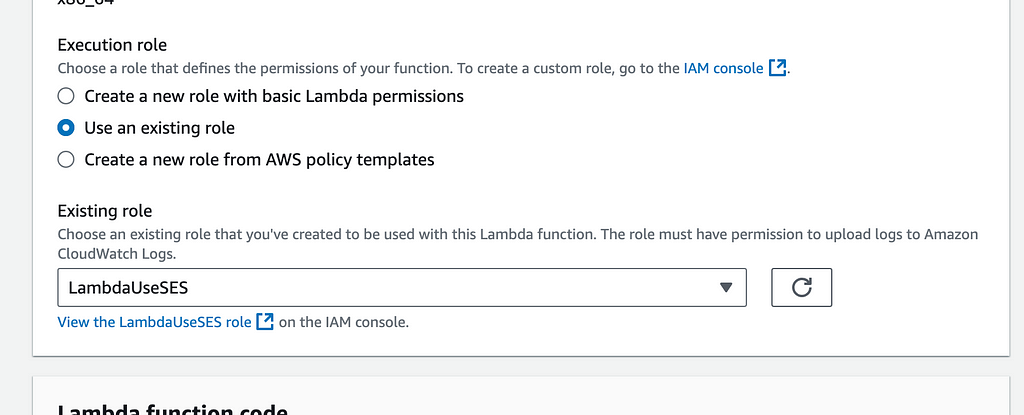This content originally appeared on Level Up Coding - Medium and was authored by Jarek Orzel
Incorporating AWS Lambda into a distributed system is a powerful way to leverage the benefits of serverless computing, enabling code execution without the need to manage infrastructure. AWS Lambda excels in event-driven architectures, where functions are triggered in response to specific events, offering cost-efficiency by charging only for the compute time used. One key principle when working with Lambda is ensuring that your functions are stateless, meaning they shouldn’t store state between invocations. However, triggering Lambda functions requires integration with other AWS services like SNS or SQS, adding complexity to the architecture, which makes it essential to understand the broader system design.
In this post, I’ll demonstrate how to use AWS Lambda as part of a notification service, where SNS is used to publish messages to a topic, and Lambda is triggered to process those notifications. We’ll walk through configuring the necessary AWS services — IAM, SNS, SES, and Lambda — to create a simple notification service.
AWS Lambda Overview
AWS Lambda is a serverless computing service that allows you to run code without the need to provision or manage servers. This service automatically scales based on the amount of incoming traffic, enabling your applications to handle varying workloads without requiring manual intervention. You only pay for the compute time used, making it cost-efficient and scalable for event-driven applications.
Lambda can be triggered by other AWS services like API Gateway, SNS or S3 (push model) to execute code in response to events. Depending on the event source, AWS handles whether the invocation is synchronous (where Lambda returns the response to the triggering service) or asynchronous (where Lambda processes the event and handles retries if needed).

In a pull model, Lambda consumes data from queues or streams, periodically processing events as they come in.

Security is critical in Lambda, and it uses two types of permissions: invocation permissions to allow event sources to trigger the function, and execution roles that grant Lambda access to other AWS services. These roles are managed using IAM policies.

Lambda can be configured using multiple methods, including:
- AWS Management Console (UI)
- AWS CLI
- AWS SDK (language-specific API)
- AWS Cloudformation — infrastructure as code (JSON, YAML)
- AWS Serverless Application Model (templates to create different types of functions).
Architecture
When a user makes a reservation, we want to notify the user. In this context, AWS Lambda can be utilized as a notification service. However, we cannot directly trigger the Lambda function from our code. For example, we can use AWS Simple Notification Service (SNS) to publish a message to a topic, and then the Lambda function can be subscribed to the topic. AWS Lambda handler can encapsulate notification logic (e.g. choosing notification type, whitelisting the user, etc.) but cannot send the email or sms directly. The AWS Simple Email Service (SES) can be used to send the email.

Publish message to AWS SNS
Our reservations service should expose API to trigger the action in a production-ready system. However, for simplicity, we will use a simple function to simulate the reservation.
import boto3
import json
import os
import random
# Initialize SNS client
sns = boto3.client(
'sns',
region_name=os.environ.get('REGION'),
aws_access_key_id=os.environ.get('ACCESS_KEY_ID'),
aws_secret_access_key=os.environ.get('SECRET_ACCESS_KEY'),
)
# Your SNS Topic ARN
sns_topic_arn = os.environ.get('TOPIC_ARN')
def publish_message(message):
response = sns.publish(
TopicArn=sns_topic_arn,
Message=json.dumps({'default': json.dumps(message)}),
MessageStructure='json',
)
print(f"Message published to SNS: {response['MessageId']}")
if __name__ == "__main__":
r = random.randint(0, 1000000)
message = {
'event': 'Reservation',
'user_id': '12345',
'email': f'user+{r}@example.com',
'body': 'Reservation made successfully',
}
publish_message(message)
We need to have installed the boto3 package to use AWS SDK for Python. We can install it using pip:
$ pip install boto3
To integrate our code with any AWS service, we need to provide AWS credentials. The easiest way is to create a new IAM user with programmatic access and attach the necessary policies.
- Log in to the AWS Management Console using your root user AWS account: console.aws.amazon.com.
- Navigate to the IAM section.

- Click on the Users tab and then click on Create user button.

- Specify the user name.

- Select Attach policies directly permission options.
- Attach the following policies: AmazonSNSFullAccess

- Continue to the next steps and create the user.
- Choose the created user and click on the Create access key button.

- Download the credentials as a CSV file.

- Set the environment variables in your system:
export ACCESS_KEY_ID=your_access_key_id
export SECRET_ACCESS_KEY=your_secret_access_key
In the next step, we need to create an AWS Simple Notification Service (SNS) topic that will be used to publish messages.
- Navigate to the SNS service in the AWS Management Console.
- Click on the Create topic button and click Next

- Use the default settings and click Create topic.

- Copy the ARN of the created topic.

- Set the environment variable in your system:
export TOPIC_ARN=arn:aws:sns:us-east-1:338535437683:notifications
export REGION=us-east-1
When we run our code:
$ python app.py
Message published to SNS: ea014270-af41-52d3-acb4-1de1320e28fa
We should get a log that the message was successfully published to the SNS topic.
In the next section, we will add the AWS Lambda function that consumes events from the topic.
AWS SES config
Before we prepare the AWS lambda function, we need to configure the AWS Simple Email Service (SES) to send emails. The default SES service is in sandbox mode, which means that you can only send emails to verified email addresses. To send emails to any email address, you need to request production access. For our example, we will use the sandbox mode.
- Navigate to the SES service in the AWS Management Console.
- Pass the email address you want to receive messages in sandbox mode.

- Pass the domain name (however, it is not required for the sandbox mode).

- Finish the verification process

- Confirm the email address in your mailbox.
- Send a test email.

To move out of the SES sandbox and send emails to any recipient, you need to request production access and provide a verified domain you own.
AWS Lambda Handler
Now, we can create the Lambda function that will be triggered by the SNS topic. However, we need to have an IAM role that will allow the Lambda function to be triggered by the SNS topic.
- Navigate to the IAM service in the AWS Management Console.

- Click on the Roles tab and then click on the Create role button.
- Choose the Lambda service as the service or use case and AWS Service as a trusted entity.

- Attach the following policies: AWSLambdaBasicExecutionRole, AmazonSESFullAccess

- Specify the name (LambdaUseSES in our case) of the role and click on the Create role button.
Having the role created, we can now create the Lambda function.
- Navigate to the Lambda service in the AWS Management Console.
- Click on the Create function button.

- Choose the Use a blueprint option and search for the sns blueprint. We use py3.10 SNS integration.

- Specify the name of the function (notification-handler in our case).
- Choose the Use an existing role option and select the role LambdaUseSES we have created for our lambda.

- In the SNS trigger section, select the SNS topic notifications we created. It will automatically create the subscription.

- The function code will be updated later.
- Click on the Create function button.
Our AWS Lambda function is now configured to be triggered by SNS messages from notifications topic.

The last step is to update the Lambda function code. We will use the following code:
import json
import boto3
client = boto3.client('ses', region_name='eu-central-1')
def lambda_handler(event, context):
data = json.loads(event['Records'][0]['Sns']['Message'])
body = data.get('body')
email = data.get('email')
response = client.send_email(
Destination={
'ToAddresses': ['verified@mail.com']
},
Message={
'Body': {
'Text': {
'Charset': 'UTF-8',
'Data': body,
}
},
'Subject': {
'Charset': 'UTF-8',
'Data': 'Reservation email to:' + email,
},
},
Source='verified@mail.com'
)
print("Send mail to:" + email)
return {
'statusCode': 200,
'body': json.dumps("Email Sent Successfully. MessageId is: " + response['MessageId'])
}
Inside the Lambda function, we can use the boto3 package to send emails using the SES service without any additional configuration. Within the code, we need to log the email address to which we want to send the email. As we are in sandbox mode, we can only send emails to verified email addresses. So, the outgoing email address must be the one we verified in the SES service. When we are ready with the code, we can update the Lambda function code by clicking Deploy. The new version of the Lambda function is ready to be triggered by the SNS topic.
To test it end to end we can execute our app.py script:
$ python app.py
Message published to SNS: 87633e01-380e-5060-a9a4-619089a9bc6a
The email should have arrived in our mailbox. However, providing the Lambda function with AWSLambdaBasicExecutionRole role enables CloudWatch logs access. How to check it?
- Navigate to your Lambda function page.
- Click on the Monitor tab.
- Click on the View logs in CloudWatch button.

- Click on the latest log stream (each deployed version of your lambda will have a separate log stream).

- Check the logs.

We can see the request 21c1841e-a6c2-4ecc-9856-fe6a1682454d and successful Send mail to:user+577461@example.com log. The email message can also be found in my mailbox.

Conclusion
In conclusion, while our example Lambda function is straightforward, a production-ready version should account for additional complexities, such as retry mechanisms, decision-making around notification types (email, SMS, push), and robust error handling. It’s essential to think through these scenarios to ensure reliability and scalability. If you’re concerned about costs, tools like the AWS Pricing Calculator can help estimate Lambda expenses based on your usage.
While AWS Lambda is a powerful tool for serverless event-driven systems, it’s important to recognize that it’s not a one-size-fits-all solution. Understanding its limitations and the specific use cases where it excels is key to making the most of this service in your distributed system architecture.
How to Incorporate AWS Lambda into a Distributed System was originally published in Level Up Coding on Medium, where people are continuing the conversation by highlighting and responding to this story.
This content originally appeared on Level Up Coding - Medium and was authored by Jarek Orzel
Jarek Orzel | Sciencx (2024-10-24T01:05:59+00:00) How to Incorporate AWS Lambda into a Distributed System. Retrieved from https://www.scien.cx/2024/10/24/how-to-incorporate-aws-lambda-into-a-distributed-system/
Please log in to upload a file.
There are no updates yet.
Click the Upload button above to add an update.
